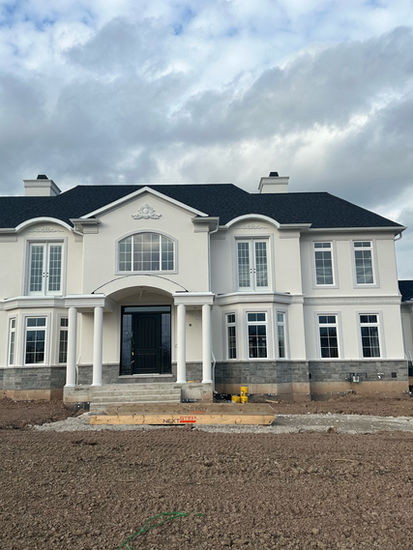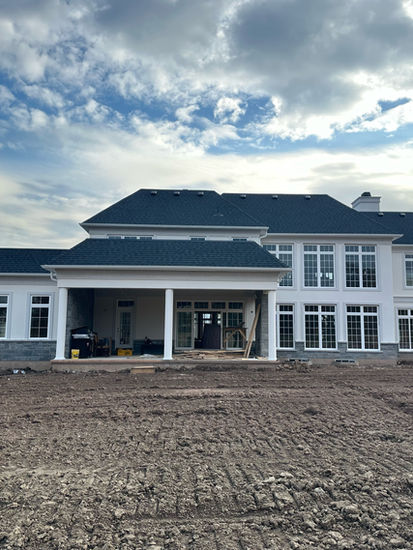
STUCCO
As a building material, stucco is a durable, attractive, and weather-resistant wall covering. It was traditionally used as both an interior and exterior finish applied in one or two thin layers directly over a solid masonry, brick, or stone surface. The finish coat usually contained an integral color and was typically textured for appearance.
Then with the introduction and development of heavy timber and light wood-framed construction methods, stucco was adapted for this new use by adding a reinforcement lattice, or lath, attached to and spanning between the structural supports and by increasing the thickness and number of layers of the total system. The lath added support for the wet plaster and tensile strength to the brittle, cured stucco; while the increased thickness and number of layers helped control cracking.
The traditional application of stucco and lath occurs in three coats the scratch coat, the brown coat and the finish coat. The two base coats of plaster are either hand-applied or machine sprayed. The finish coat can be troweled smooth, hand-textured, floated to a sand finish or sprayed.
Originally, the lath material was strips of wood installed horizontally on the wall, with spaces between, that would support the wet plaster until it cured. This lath and plaster technique became widely used.
In exterior wall applications, the lath is installed over a weather-resistant asphalt-impregnated felt or paper sheet that protects the framing from the moisture that can pass through the porous stucco.
Following World War II, the introduction of metal wire mesh, or netting, replaced the use of wood lath. Galvanizing the wire made it corrosion resistant and suitable for exterior wall applications. At the beginning of the 21st century, this "traditional" method of wire mesh lath and three coats of exterior plaster was still widely used.
♦Rigid and durable
♦Long-lasting (up to 50 years)
♦Variety of textures and colors
♦Low maintenance (only needing 1-2 cleanings per year)
EIFS
EIFS is applied in multiple layers over exterior sheathing, providing more insulation and moisture protection than traditional stucco. The typical components (layers) of EIFS include:
♦A water-resistive barrier over the substrate prevents moisture from infiltrating the system.
♦A layer of expanded polystyrene (EPS) , extruded polystyrene (XPS), or mineral wool provides added insulation.
♦A layer of fiberglass mesh provides reinforcement and adds crack resistance. It will also protect against cracks and crumbling due to shifting foundations, thermal expansion, and freeze/thaw cycles.
♦A water-resistant base coat, embedded into the glass-fiber reinforcing mesh, applies on top of the insulation, and serves as a weather barrier.
♦A finishing coat furnishes the color, texture, and protective nature of the structures’ exterior surfaces.
















